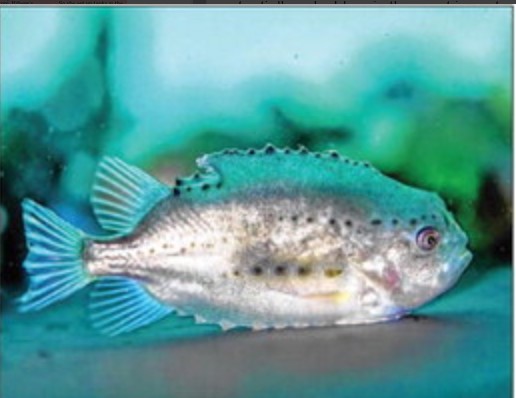Today’s insight into the scientific method is brought to you via a nondescript ocean dweller with the unlyrical name of lumpfish.
The lumpfish, as I learned from a UNH press release, was the subject of recent research by Dr. Elizabeth Fairchild, a professor in the School of Marine Science and Ocean Engineering at UNH. She discovered that these fish become less aggressive if aquaculture managers turn the lights on and off at roughly 12-hour intervals while raising them.
This is of great interest to lumpfish hatcheries but I don’t have a hatchery and you probably don’t either so why am I bringing it up? Because the whole topic struck me as completely off-the-wall – why lumpfish? why study aggression? why test light patterns, of all things? – that I thought it could provide an interesting look at how a research scientist decides to spend their limited time, money and intellectual energy.
I called Fairchild and got right to it: Why study this problem and why test that solution?
“There are always a million questions,” she agreed. “You have to choose.”
Lumpfish, she told me, are important to the salmon industry because they eat sea lice, a serious pest in salmon hatcheries that resist control methods like chemicals, structures or fresh-water baths. Raising lumpfish to act as “cleaner fish” amid salmon is good business since the hatchery salmon industry is worth $15 billion or more.
That name, by the way, is given because they are kind of lumpy-looking compared to most sleek fish. They also have a modified pelvic fin that acts like a suction disc so the fish can attach itself to objects, which is why the species is sometimes called lumpsucker, which is even less elegant than lumpfish.
The issue here is that lumpfish are aggressive when young and will attack each other, the point of cannibalism, when raised in large numbers. Hatcheries would love to get lumpfish to embrace peace, love and understanding but didn’t know how.
Fairchild encountered this question while poking around and looking for interesting problems to tackle. That, incidentally, is a common part of every researcher’s life. Spotting fruitful problems – those that are interesting, valuable, unsolved but potentially solvable – is the most important skill a scientist can have. Everything else flows from that.
Fairchild said she looks for problems in the usual scientific way: reading research journals, attending conferences and keeping an open mind during fieldwork. In her case, the latter involves a lot of casual banter during long trips on fishing vessels.
“In commercial fisheries … there’s often a lot of talking with fishermen in the wheelhouse. There’s hours and hours of going back and forth. They’ll start talking, and I’m like, I never thought of that – hmmm, that’s curious,” she said. “Then I’ll go into the scientific literature. If there’s nothing published about this, so I start to think why does that happen, what does that mean.”
Fairchild has dealt with a lot of fish hatcheries in her career. Each is unique in design, she said. “It’s not like there’s a standard cookie-cutter. You can’t order a hatchery from Amazon to put together with an Allen wrench.” Variables include water temperature, salinity, oxygen levels, lights, density of fish per tank and probably other things I don’t know about.
When she decided that lumpfish aggression was a worthwhile target she did “a scientific literature deep dive learning about behavior, morphology, fish aquaculture, understanding the topic more broadly.” One thing she saw was studies about melatonin (the sleep hormone) in fish and its relation to aggressive behavior in several other species of fish.
In the ocean, lumpfish live fairly deep as they get older and even when young near the surface it’s not daylight all the time, so she wondered if the hatchery practice of constant illumination might be affecting melatonin production, in turn affecting aggression.
“Thinking about things from a holistic point of view that guides a lot of experimental design in any science,” she said.
So she set up tanks in the Coast Marine Laboratory, tried varying illumination patterns as well as density of fish and fish size, and found a significant difference in behavior. A paper in the North American Journal of Aquaculture followed suit with coauthors Brittany Jellison, an assistant professor in UNH’s biological sciences department, and Shelby Perry, a master of science student in the UNH marine biology program.
She hopes they’ll make things easier on the commercial hatchery industry that we increasingly depend on as wild fisheries decline in a climate-changing world.
Fairchild says there were more details they could have studied, but reality reared its ugly head.
“We have lots of ideas that we’d love to test but UNH Coastal Marine Lab is very small, with lots of different users – professors, grad students, undergrad students – all doing a variety of studies on a variety of organisms,” she said.
“It’s like a game of Tetris in our lab, try to fit everybody.”


 Return to the Concord Monitor
Return to the Concord Monitor